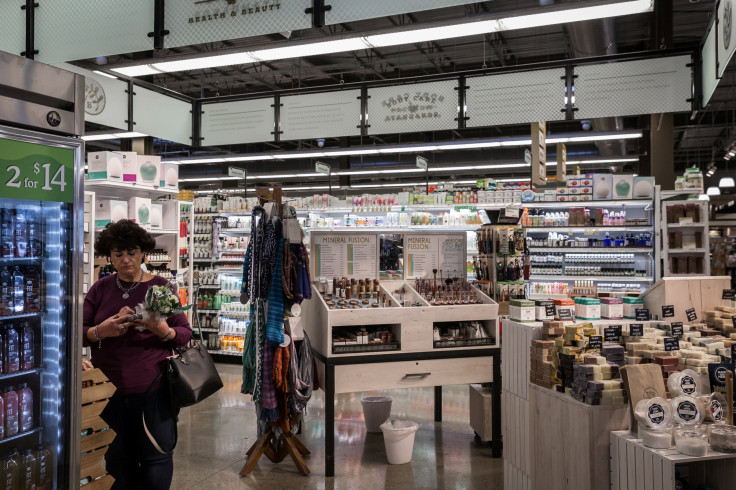US Economy: Monthly Consumer Prices Increase Moderately In May

WASHINGTON - U.S. monthly consumer inflation rose moderately in May as gasoline price increases slowed, suggesting the Federal Reserve could continue to gradually raise interest rates this year.
The Labor Department’s inflation report was published ahead of the start of the Fed’s two-day policy meeting on Tuesday. Steadily rising inflation and a tightening labor market are seen encouraging the U.S. central bank to hike rates for a second time this year on Wednesday.
“Neither too hot nor too cold,” said Michael Feroli, an economist at JPMorgan in New York. “As such, today’s news won’t change the terms of the inflation debate, and is likely to do little to stir the pot at the Fed meeting.”
The Consumer Price Index increased 0.2 percent last month, also as food prices were unchanged. That followed a similar gain in the CPI in April. In the 12 months through May, the CPI accelerated 2.8 percent, the biggest advance since February 2012, after rising 2.5 percent in April.
The surge in the annual CPI is largely the result of last year’s weak readings, which were driven by big declines in the prices of cell phone service plans and doctor fees, falling from the calculation.
Excluding the volatile food and energy components, the CPI rose 0.2 percent, supported by a rebound in new motor vehicle prices and a pickup in the cost of healthcare, after edging up 0.1 percent in April. That lifted the year-on-year increase in the so-called core CPI to 2.2 percent, the largest rise since February 2017, from 2.1 percent in April.
The Fed tracks a different inflation measure, which is just below its 2 percent target. Economists are divided on whether policymakers will signal one or two more rate hikes in their statement accompanying the rate decision on Wednesday.
“The slow but steady upward pressure on inflation could tilt a majority of policymakers to lift their suggested interest rate forecast, possibly penciling in two additional moves in the second half of the year after almost certainly raising rates tomorrow,” said Sal Guatieri, a senior economist at BMO Capital Markets in Toronto.
The dollar was little changed against a basket of currencies while prices for U.S. Treasuries fell slightly. Stocks on Wall Street were trading higher.
INFLATION ON THE HORIZON
The Fed’s preferred inflation measure, the personal consumption expenditures price index excluding food and energy, rose 1.8 percent on a year-on-year basis in April, matching March’s increase. Economists expect the core PCE price index will breach its 2 percent target this year.
Fed officials have indicated they would not be too concerned with inflation overshooting the target.
A survey by the NFIB on Tuesday showed the share of small businesses reporting raising prices hitting it highest level since 2008 in May. Several regional factory surveys have shown manufacturers paying more for raw materials this year.
Economists expect these higher costs will eventually be passed on to consumers. That, together with an expected acceleration in wage growth from a tight labor market could boost inflation later this year. The unemployment rate is at an 18-year low of 3.8 percent.
“There is inflation out there on the horizon but it is largely a mirage policymakers think will disappear when the economy gets there,” said Chris Rupkey, chief economist at MUFG in New York.
Last month, gasoline prices increased 1.7 percent after surging 3.0 percent in April. Food prices were unchanged in May after rising 0.3 percent in the prior month. Food consumed at home fell 0.2 percent amid declines in the cost of meat, eggs, fruits and vegetables.
Owners’ equivalent rent of primary residence, which is what a homeowner would pay to rent or receive from renting a home, rose 0.3 percent in May after a similar gain in April.
Healthcare costs gained 0.2 percent last month, with prices for prescription drugs jumping 1.4 percent and the cost of hospital visits rising 0.5 percent. Healthcare costs nudged up 0.1 percent in April. Prices for new motor vehicles rose 0.3 percent after sliding 0.5 percent in April.
But prices for used cars and trucks fell 0.9 percent after tumbling 1.6 percent in April. Airline fares declined 1.9 percent in May after dropping 2.7 percent in the prior month. Prices for apparel and recreation were unchanged in May.
Reuters
Reporting by Lucia Mutikani; Editing by Paul Simao and Chizu Nomiyama
© Copyright Thomson Reuters 2024. All rights reserved.











